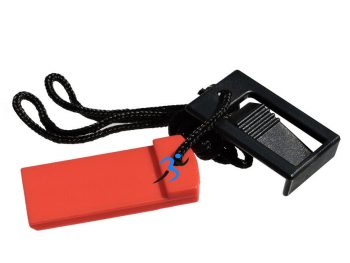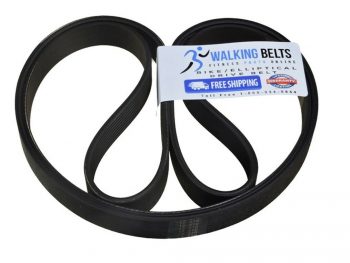High-Performance Treadmill Walking Belts for All Major Brands

In the realm of fitness equipment, high-performance treadmill walking belts play a crucial role in ensuring a smooth and safe workout experience. Whether you are a casual user or a dedicated trainer, selecting the right walking belt for your treadmill is essential for enhancing performance and prolonging the life of your equipment. This article delves into the intricacies of treadmill belts, their importance, and the different types available for various models.
Understanding Treadmill Belts
Treadmill belts, also known as walking belts or running belts, are vital components of any treadmill system. They provide the surface upon which users run or walk, facilitating movement while ensuring safety and comfort. A treadmill walking belt is designed to withstand the rigors of frequent use, and its performance can significantly affect the overall experience. Selecting a high-quality treadmill belt is essential for maintaining speed and efficiency during workouts.
What is a Treadmill Walking Belt?
A treadmill walking belt is a continuous loop of material that moves over the treadmill’s deck, driven by the motor through a series of rollers. This belt must be compatible with the specific model of the treadmill to ensure optimal performance and safety. It is engineered to reduce friction and noise during operation, providing a smooth running experience. Many brands offer replacement walking belts that can easily be installed to rejuvenate the treadmill’s functionality, often shipped directly to your door for convenience.
Importance of a High-Performance Treadmill
The importance of a high-performance treadmill belt cannot be overstated. A well-designed belt not only enhances the safety of the user by preventing slips and falls but also aids in the efficiency of the treadmill’s motor. Moreover, a quality walking belt can help prevent overheating and excessive wear on the treadmill drive components, including the rear roller, ultimately extending the life of the equipment. Regular maintenance and timely replacement of the treadmill belt are essential to ensure that your workout experience remains safe and effective.
Types of Treadmill Belts for Different Models
Treadmill belts are available in various types, each tailored to specific treadmill models and brands, ensuring compatibility with the latest models listed. From commercial-grade to those designed for home use, the options are wide and varied. Each model may require a specific part number for compatibility, so it’s crucial to shop based on your treadmill’s specifications and the models listed by the manufacturer. Understanding the differences between OEM and aftermarket belts can also help users discover the best fit for their needs while ensuring that they maintain high performance during every workout.
Replacement and Maintenance of Treadmill Belts
When to Replace Your Treadmill Walking Belt
Knowing when to replace your treadmill walking belt is crucial for maintaining safe and effective workouts. Key indicators include visible signs of wear, such as fraying or cracking, which not only detract from the treadmill’s aesthetics but can also pose safety risks to users with varying gait patterns. Unusual noises during operation, like scraping or grinding, suggest that friction between the worn-out treadmill belt and the deck may lead to further damage. Additionally, if the performance of your treadmill decreases, with the belt slipping or becoming uneven, this could compromise your workout experience. It’s essential to regularly inspect the treadmill walking belt for these symptoms and follow the owner’s manual for proper adjustments or replacements.
Steps for Replacing a Treadmill Belt
Replacing a treadmill walking belt is a task that demands careful attention to safety and installation procedures, particularly when handling the rear roller. Begin by unplugging the treadmill and removing the safety key to prevent any accidental injuries. Ensure you have the necessary tools—such as an Allen wrench set, Phillips screwdriver, and treadmill silicone lubricant—on hand. The process involves several steps: removing the motor hood and right side foot rail, followed by detaching the old walking belt. Installing the new belt correctly is vital for its optimal performance. After securing the components, check the belt tracking and apply silicone lubricant for smooth operation. This careful replacement procedure guarantees a safe and effective workout experience.
Maintenance Tips for Long-Lasting Performance
To ensure your treadmill walking belt continues to function optimally, regular maintenance, including checking the motor belt, is key. Keeping the belt clean and free of debris is essential—wiping it down after each use helps prevent friction and wear, contributing to the longevity of the motor belt. Routine lubrication is also recommended to minimize the risk of overheating and prolong the life of both the walking belt and the treadmill drive components. Always refer to your treadmill’s user manual for the right types of lubricants and application techniques, which can significantly affect the performance of the motor belt. By following these maintenance tips, you can significantly increase the lifespan and performance of your treadmill, allowing for a safer and more enjoyable fitness routine.
Choosing the Right Treadmill Walking Belt
Factors to Consider for Your Treadmill Selection
Selecting the right treadmill walking belt hinges on various factors that impact compatibility and performance. It’s crucial to consider the specific model number of your treadmill, as this dictates the type of belt required for optimal fit. Additionally, the material and design of the belt can influence friction levels and overall durability during workouts. Understanding the different specifications, such as thickness and width, ensures you choose a belt that will maintain high performance and safety standards. Furthermore, factors like the treadmill’s intended use—whether for commercial or home fitness—can guide your selection process, helping you discover the best product for your needs.
Compatibility with Major Brands
When shopping for a treadmill walking belt, compatibility with major brands is a significant consideration. Many brands, such as ProForm, offer OEM parts that are specifically designed for their models, ensuring a perfect fit. However, aftermarket options may also be available, providing alternative solutions that can still deliver high performance. It’s essential to verify the part number of the walking belt, as this will confirm its compatibility with your treadmill model and ensure it meets the shipping requirements. By ensuring you select a compatible belt, you can avoid issues that arise from improper fit, ensuring safe operation and optimal performance during your fitness routines.
Top Models and Their Specific Requirements
Each treadmill model has its unique requirements concerning the walking belt, often dictated by its design and intended use. Commercial-grade treadmills typically necessitate a more robust walking belt to withstand frequent and intense workouts, while home models may require a different specification. Understanding these distinctions is vital when selecting a replacement belt. Additionally, consulting manufacturer guidelines can provide insights into specific recommendations for your model, ensuring that you choose a walking belt that meets the necessary standards for speed, durability, and safety. By selecting the appropriate treadmill walking belt, you maximize the performance of your equipment and enhance your overall fitness experience.
Performance and Safety Features of Treadmill Belts
Understanding the Overall Performance of Treadmill Belts
The performance of treadmill belts is pivotal in determining how effectively a treadmill operates during workouts. A high-quality treadmill walking belt minimizes friction, allowing the motor to run efficiently while maintaining speed. Additionally, the design of the belt can directly impact the noise level during operation, providing a quieter environment for users. When selecting a treadmill belt, it’s essential to consider the specific model number and ensure compatibility to maximize performance. Regular tests of the treadmill’s performance can help identify any issues with the belt that may require immediate attention or replacement, thus keeping the equipment in top shape for your fitness regimen.
Safety Considerations When Using Treadmill Belts
Safety should be the foremost concern when utilizing a treadmill walking belt, especially when considering the proper release mechanisms for emergency situations. A well-maintained treadmill belt reduces the risk of slips and falls, which can lead to serious injuries. It is critical to routinely inspect the belt for signs of wear and tear, such as fraying or cracking. These indicators can compromise the safety of your workout. Furthermore, ensuring that the treadmill drive belt is functioning correctly and that the belt is properly aligned on the deck can significantly mitigate safety risks. Using a treadmill that is compatible with major brands and following OEM guidelines will also enhance user safety during every session.
Impact of Belt Design on Treadmill Performance
The design of a treadmill belt plays a crucial role in overall treadmill performance. A belt engineered with high-quality materials can withstand intense workouts while providing the necessary traction for safe running or walking, ensuring optimal performance across various models listed. Moreover, various designs can help reduce noise and vibration, enhancing the overall workout experience. An optimal design can also influence the treadmill’s motor performance, reducing the likelihood of overheating during prolonged use. Understanding the mechanics of how different designs affect treadmill operation can aid users in selecting the best product for their needs, ensuring they enjoy maximum performance and safety from their equipment.
Accessories and Add-Ons for Treadmill Belts
Essential Accessories for Enhanced Treadmill Walking
To elevate your treadmill walking experience, several essential accessories, including a handle for improved stability, can enhance performance and comfort. Items such as treadmill mats can protect the floor while reducing noise, allowing for a quieter workout environment. Additionally, purchasing a treadmill lubricant is crucial for maintaining the walking belt’s smooth operation and prolonging its lifespan. Accessories designed for safety, such as emergency stop keys and expert guidance, are also vital to ensure a secure workout. By investing in the right accessories, you not only improve your treadmill’s performance but also create a safer and more enjoyable fitness routine.
How to Browse for Compatible Accessories
When searching for compatible accessories for your treadmill, it is vital to consider the specific model number and brand of your equipment. Many manufacturers provide a list of recommended accessories tailored to their models, ensuring that you get the best fit and performance, including options for quick installation. Shopping at specialized fitness retailers or online platforms dedicated to treadmill accessories can also simplify the process. Look for items labeled as compatible with ProForm or other major brands to ensure quality and performance. By focusing on compatible products, you can enhance the functionality of your treadmill while maintaining high safety standards.
Popular Add-Ons for Improved Fitness Experience
Among the most popular add-ons for treadmills are advanced consoles that track performance metrics such as speed, distance, and calories burned. These features not only enhance the workout experience but also provide valuable data that can motivate users. Additionally, incorporating Bluetooth speakers or workout fans can create a more enjoyable environment, making fitness routines feel less monotonous. Accessories like heart rate monitors can also provide real-time feedback, allowing users to optimize their workouts for better results. Exploring these add-ons can transform your treadmill into a more dynamic and engaging fitness tool, ensuring you stay committed to your fitness goals.





